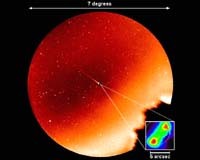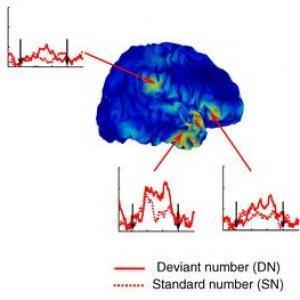Meanwhile, fall arrived in the southern hemisphere of Mars on Dec. 9, 2007, Opportunity's 1,378th Martian day, or sol, of exploration of the Red Planet. Ten days later, Earth made its closest approach to Mars, coming within 88 million kilometers (54.8 million miles).
Opportunity used the rock abrasion tool to bore a shallow hole into a rock target known as "Lyell_1" and then spent about 70 hours integrating data about iron minerals inside the rock using the Moessbauer spectrometer.

|
| ©Unknown |
| A recent rock grind preformed on Sol 1351 |








